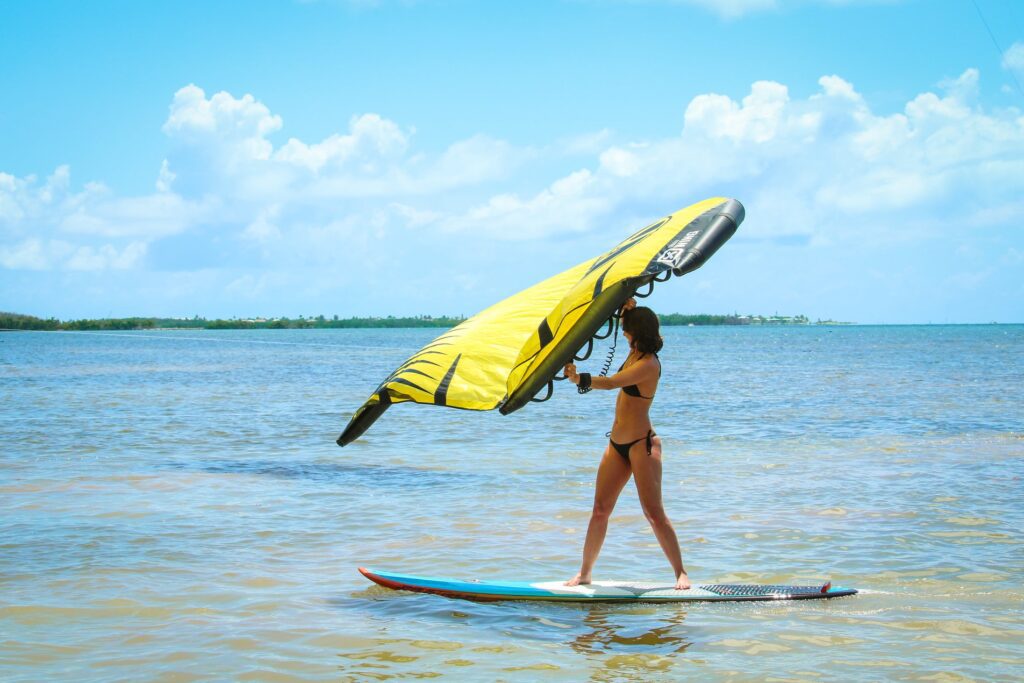
Wing surfing History
Wing surfing can be traced back to the early 2000s when windsurfers began experimenting with handheld wings that could be used to generate lift and propel them across the water. However, it wasn’t until the mid-2010s that wing surfing really began to gain popularity.
One of the pioneers of wing surfing is Tony Logosz, founder of the water sports company Slingshot Sports. In 2016, Logosz and his team began developing a handheld wing that could be used to propel a rider across the water without the need for a sail or kite. The first commercially available wing, the Slingshot Slingwing, was released in 2019 and quickly gained a devoted following.
Today, wing surfing has become a popular sport around the world, with dedicated wing surfboards and foils being developed to enhance the experience. Wing surfing combines elements of windsurfing and kiteboarding, allowing riders to use the wing to generate lift and power while maneuvering the board with their feet.

Wing surfing has also become a popular alternative to traditional surfing, as it allows riders to catch waves that may be too small for traditional surfing or too large for other water sports. With its versatility and accessibility, wing surfing is quickly becoming one of the most exciting and accessible water sports available.
In conclusion, wing surfing is a relatively new and exciting water sport that has rapidly gained popularity in recent years.
From its origins as an experimental concept to its current status as a thriving sport with dedicated equipment and passionate enthusiasts, wing surfing has come a long way in a short amount of time.
Whether you’re an experienced water sports enthusiast or a beginner looking to try something new, wing surfing offers a thrilling and accessible way to enjoy the water.